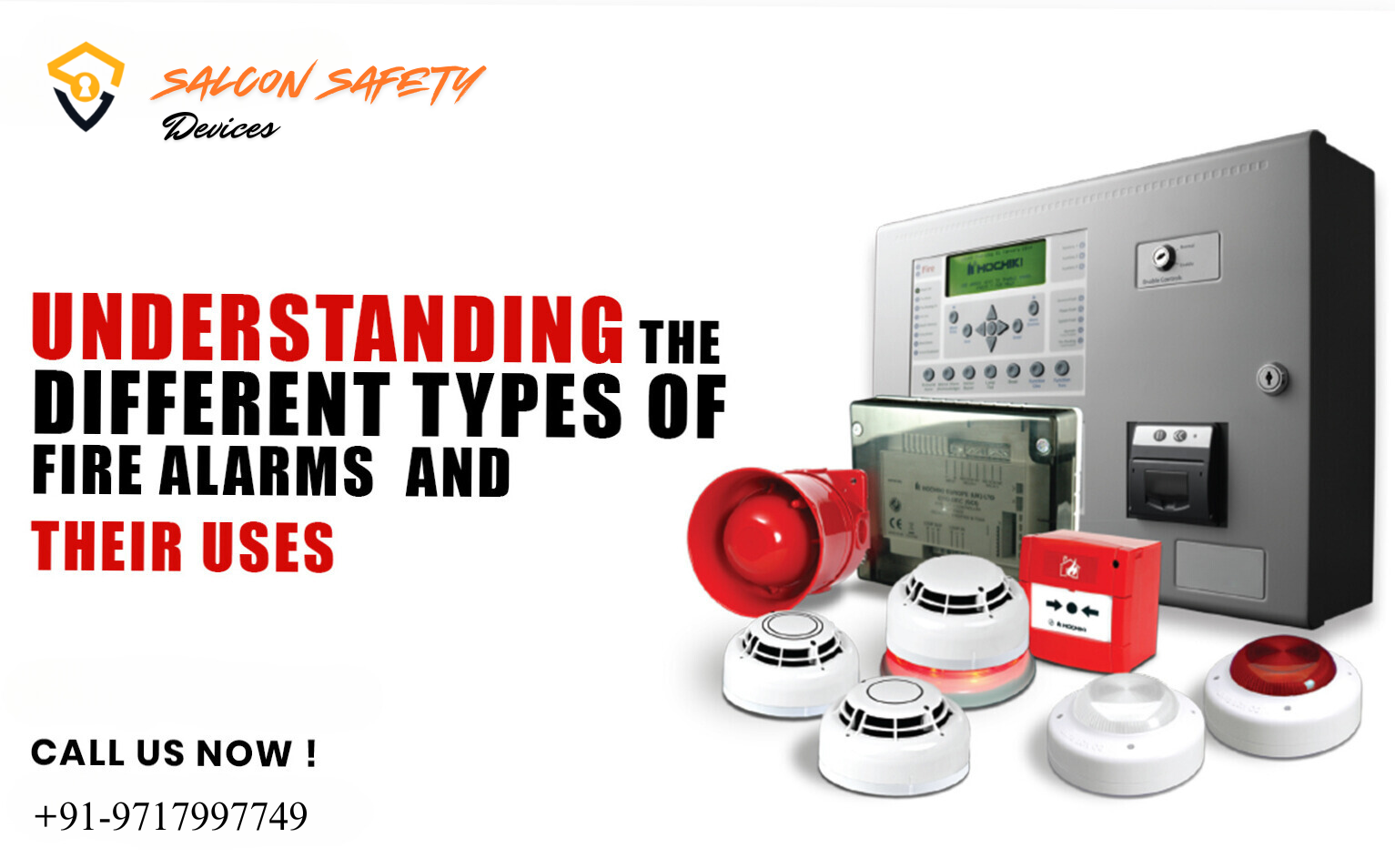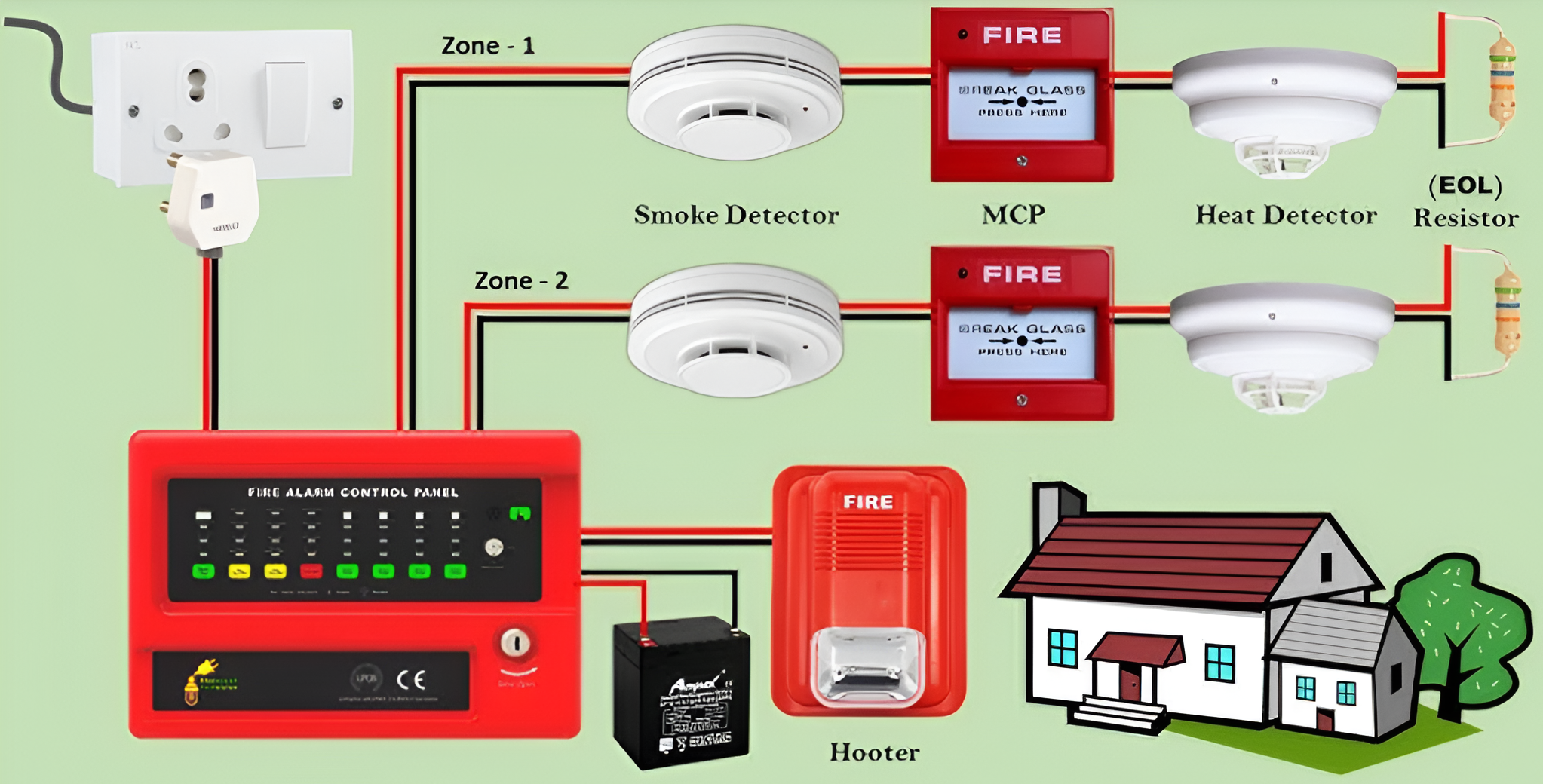
Understanding Fire Alarm Hooters: A Detailed Guide
Fire safety is important for building management. Having an effective fire alarm system is best for the management. It protects lives and property. One of the important components of this system is the fire alarm hooter. This device is important. It alerts residents to fire dangers.
This ensures they've got time to get out safely. In this article, we cover the importance, function, and types of fire alarm hooters. We also cover the best ways to install and maintain them.
What is a fire alarm hooter?
A fire alarm hooter is also known as a fire alarm siren or horn. It's a loud alert device that signals a fire or smoke in a building. Its main purpose is to provide a clear warning to occupants. It prompts them to shift right away. Fire alarm hooters are a major part of fire alarm systems. They can be heard easily throughout the building, even in noisy places.
Importance of Fire Alarm Hooters
Early Warning
The most important advantage of a fire alarm hooter is its ability to provide an early warning. It releases a loud, unique sound. The sound alerts residents to the danger, giving them time to leave the building safely.
Compliance with Safety Regulations
Local fire safety codes and regulations often require installing fire alarm sirens. Compliance ensures that buildings meet safety standards. It's reduced the risk of fines and makes things safer.
Enhanced Safety
A working fire alarm hooter can greatly reduce injury or death risk. It executes this in the event of a fire. Its loud sound alerts everyone in the building. It doesn't matter where they are.
A Peace of Mind
Knowing a reliable fire alarm hooter is in place brings peace of mind. It warns for fire to protect building residents and owners. It assures them that they'll be alerted on time if there's a fire. This give time to shift easily.
How Do Fire Alarm Hooters Work?
Fire alarm hooters work by changing electrical signals into loud sounds. They alert people of a fire emergency. A fire detector senses smoke or heat. It sends a signal to the control panel, which then activates the hooter.
Inside the hooter, a circuit makes a high-decibel sound. It is often a continuous or intermittent tone. This ensures it is heard throughout the area. This immediate auditory warning prompts occupants to evacuate the premises and seek safety.

Detection
Fire alarm systems include many sensors and detectors. These include smoke and heat detectors. They also include manual call points. When these sensors detect smoke, heat, or a manual trigger, they send a signal to the fire alarm control panel.
Activation
Upon receiving the signal, the control panel activates the fire alarm's hooters. The hooters then release a loud, continuous sound to alert occupants. In some systems, the hooter may also have flashing lights. These help those with hearing lose.
Notification
The hooter's sound notifies occupants. It tells them to evacuate the building right away. It's usually made to be loud enough to be heard over background noise. It's also made to be heard from a distance.
Types of Fire Alarm Hooters
Conventional Fire Alarm Hooters
The hooters are conventional fire alarms. They are connected to a control panel. The hooters activate when the panel gets a signal from a detector. These hooters are for small to medium-sized buildings. They are also easy to install and maintain.
Addressable Fire Alarm Hooters
Addressable fire alarm hooters are part of more advanced fire alarm systems. Each hooter has a unique address. This allows the control panel to find the activated hooter's exact location. This feature is beneficial for large buildings, as it helps pinpoint the source of the alarm.
Wireless Fire Alarm Hooters
Wireless fire alarm systems are great for buildings. Running wiring is hard or ugly there. These hooters communicate with the control panel by radio signals. This allows for flexible installation.
Combined Sounder-Beacon Hooters
Combined sounder-beacon hooters provide both audible and visual alerts. They are useful in loud places. High noise might drown out the hooter. They also help in buildings with occupants who have hearing impairments.
Best Practices for Installation
Strategic Placement
Put fire alarm hooters in places. They should be heard throughout the building. Common areas include hallways, stairwells, and large rooms. Ensure that the sound can penetrate walls and doors to reach all occupants.
Compliance with Standards
Follow local fire safety codes and regulations when installing fire alarm systems. These standards often specify the lowest sound level. They also cover the distance between Hooters and other key criteria. They aim to ensure good coverage.
Regular Testing
Regularly test fire alarm hooters to ensure they're functioning correctly. Schedule monthly tests and document the results. Address any issues immediately to maintain the reliability of the system.
Integration with Other Systems
Connect fire alarm hooters to other safety systems. These include emergency lighting and public address systems. This will provide a complete safety solution. This integration ensures coordinated responses during emergencies.
Professional Installation
Hire certified professionals to install fire alarm systems. Proper installation is key to good performance. Professionals can ensure that all parts are connected and working properly.
Maintenance Tips
Routine Inspections
Conduct routine inspections to check for any signs of wear or damage. Look for issues. These include loose connections, dust, and corrosion. Fix them promptly.
Battery Checks
Check the batteries in wireless fire alarm hooters often. Replace them when needed. Low battery power can compromise the hooter's ability to function during an emergency.
Software Updates
For addressable and smart fire alarm systems, keep the software updated. This will ensure it's working with them and keeps working. Regular updates can also enhance system features and security.
Cleaning
Keep fire alarm hooters clean and free from dust and debris. Regular cleaning prevents blockages. They could muffle the sound. It also ensures that the hooter stays loud and clear.
Professional Servicing
Schedule annual servicing by a professional technician. Servicing is thorough. It includes inspections, testing, and needed repairs or replacements. They've kept the system in top condition.
Conclusion
Fire alarm hooters are key to any fire safety system. They provide early warning and help to save lives. Understanding their importance can help you make informed decisions. They relate to functionality and the different available types. This is important for decisions about installation and maintenance. Follow best practices for placement, compliance, and upkeep. This will ensure that your fire alarm hooters are reliable and effective. They will make the building safer for all occupants. Investing in good fire alarms and taking care of them isn't just about meeting rules. It's about protecting lives and property from fire.
.png)
